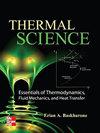超声波激励下NH3/CH4燃烧火焰及发射特性
IF 1.1
4区 工程技术
Q4 THERMODYNAMICS
引用次数: 1
摘要
氨(NH3)作为一种高能量密度的富氢载体,是一种极具发展前景的无碳燃料。NH3的低反应性和高氮氧化物(NOX)排放限制了其大规模工业应用。本文研究了超声波激励下氨/甲烷(NH3/CH4)非预混燃烧的火焰和发射特性。设计并搭建了一个实验系统,包括非预混燃烧系统、加载超声系统、偏转层析温度测量系统和烟气测量系统。进行了不同超声频率和不同NH3/CH4掺混比下的燃烧实验和测量实验。获得了超声激励下的火焰图像和烟气物质浓度。重建了三维温度场。分析了不同频率超声激励对燃烧过程火焰特性、火焰温度场和发射特性的影响。揭示了超声波激发火焰增强NH3/CH4燃烧和减少排放的机理。结果表明,NH3取代了部分碳氢燃料,减少了二氧化碳的排放。超声波作用下,NH3/CH4火焰的高度和颜色发生了变化,火焰的高温区域逐渐扩大。随着超声波频率的增加,未燃CH4、未燃NH3和NO的排放浓度显著降低。利用超声波激励火焰,降低了火焰的局部等效比,提高了燃烧效率,抑制了NOX的生成。本文章由计算机程序翻译,如有差异,请以英文原文为准。
Flame and emission characteristics from NH3/CH4 combustion under ultrasonic excitation
As a high energy density hydrogen-rich carrier, ammonia (NH3) is a highly promising carbon-free fuel. The large-scale industrial application of NH3 is limited by its low reactivity and high nitrogen oxide (NOX) emission. In this work, the flame and emission characteristics of ammonia/methane (NH3/CH4) non-premixed combustion were investigated under ultrasonic excitation. An experimental system was designed and built, including non-premixed combustion system, loading ultrasonic system, deflection tomography temperature measurement system and flue gas measurement system. Combustion and measurement experiments at different ultrasonic frequencies and NH3/CH4 blending ratios were carried out. Flame images and flue gas species concentrations under ultrasonic excitation were acquired. The 3D temperature field was reconstructed. The influence of ultrasonic excitation at different frequencies on flame characteristics, flame temperature field and emission characteristics of the combustion process was analysed. The mechanism of NH3/CH4 combustion enhancement and emission reduction was revealed when the flame was excited by ultrasonic waves. Results showed that part of the hydrocarbon fuels was replaced by NH3 to reduce carbon dioxide (CO2) emission. The height and colour of the NH3/CH4 flame were changed and the high-temperature area of the flame gradually expanded as ultrasonic acted on the flame. As ultrasonic frequency increased, the emission concentrations of unburned CH4, unburned NH3 and NO decreased significantly. The flame was excited by ultrasonic waves, which reduced its local equivalent ratio, improved combustion efficiency and suppressed NOX generation.
求助全文
通过发布文献求助,成功后即可免费获取论文全文。
去求助
来源期刊

Thermal Science
工程技术-热力学
CiteScore
2.70
自引率
29.40%
发文量
399
审稿时长
5 months
期刊介绍:
The main aims of Thermal Science
to publish papers giving results of the fundamental and applied research in different, but closely connected fields:
fluid mechanics (mainly turbulent flows), heat transfer, mass transfer, combustion and chemical processes
in single, and specifically in multi-phase and multi-component flows
in high-temperature chemically reacting flows
processes present in thermal engineering, energy generating or consuming equipment, process and chemical engineering equipment and devices, ecological engineering,
The important characteristic of the journal is the orientation to the fundamental results of the investigations of different physical and chemical processes, always jointly present in real conditions, and their mutual influence. To publish papers written by experts from different fields: mechanical engineering, chemical engineering, fluid dynamics, thermodynamics and related fields. To inform international scientific community about the recent, and most prominent fundamental results achieved in the South-East European region, and particularly in Serbia, and - vice versa - to inform the scientific community from South-East European Region about recent fundamental and applied scientific achievements in developed countries, serving as a basis for technology development. To achieve international standards of the published papers, by the engagement of experts from different countries in the International Advisory board.
 求助内容:
求助内容: 应助结果提醒方式:
应助结果提醒方式:


